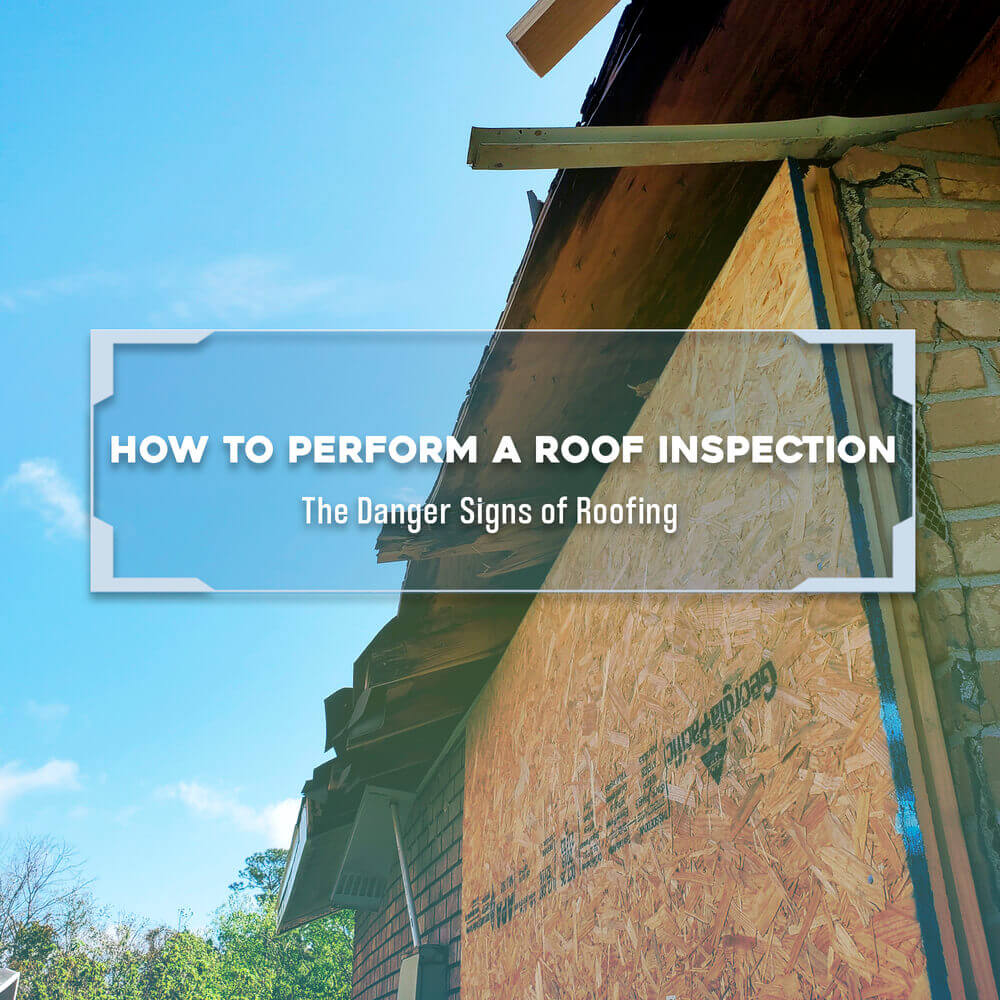In previous posts we have discussed the necessity of roof inspections. In fact, we have delved into the potential dangers of neglecting a roof inspection. Not only do roof inspections serve as damage prevention, but they also save you large costs in repairs longer down the road. Typically, you should have a roof inspection performed at least twice a year, and after every storm or severe weather event. However, if you don’t have the ability to have a professional inspect your roof right away, you can do a mock inspection yourself. It is important to note that these steps will not replicate the entirety of a professional evaluation.
Table of Contents
Walk Around Your Home
When you inspect your roof, you can’t always tell damage when standing on top of your roof. Therefore, you should walk around your home’s exterior, inspecting the roof from the ground. Be on the lookout for signs of damage, sagging, and aging. Take notes of these problem areas, or label these as areas in need of closer inspection.
Identify Areas of Water Damage
When inspecting your roof, it is important to be on the lookout for water damage. Water damage can cause accelerated deterioration of roofing materials. Signs of potential water damage are areas with moss, algae, and piles of leaves. These areas are notorious for causing costly leaks and water damage. If left unchecked, water damage can worsen by entering the household, where it can cause further damage.
Be Aware of Shingles
As you perform your roof inspection, keep an eye out for buckled and curled shingles. Stifling air from attics can cause shingles to buckle and curl away from the home. This can put your roof and home at a greater risk for weather damage and poor roof ventilation.
It is also important to look for missing, damaged, and aged shingles. These are the leading cause of roof damage. Be sure to take your time when inspecting your roof, because catching these minor issues can prevent serious issues. Think about it, when you are missing shingles, your home is directly exposed to inclement weather! Plus, they also make a home look worse!
Look for granule loss on your shingles, which refers to the actual texture on your shingles. Granule loss indicates that shingles have aged or have been affected by severe weather. This means that those affected shingles are no longer protecting your home against damaging storms. In many cases, those shingles need to be replaced.
Check Your Gutters
Gutters are important to managing the accumulation of water on your roof. Therefore, it is important to ensure that they are clean, along with the roof overhangs and downspouts. Once they are clean, you need to note any open joins and signs of rot. These are usually indicators of larger issues.
Check the Attic
If your home doesn’t have an attic, then you can skip this step. If it does, then you need to begin looking through the roof for signs of water penetration. Like how water damage on a roof is hazardous, so is water penetration in an attic. Moisture in an attic can cause issues like insulation degradation, rotting wood, mold, and even compromised structural support.
If you need a professional roof inspection, contact Sabio Engineering Services at (929) 381-0300 or visit our website.
Sabio Engineering Services.


